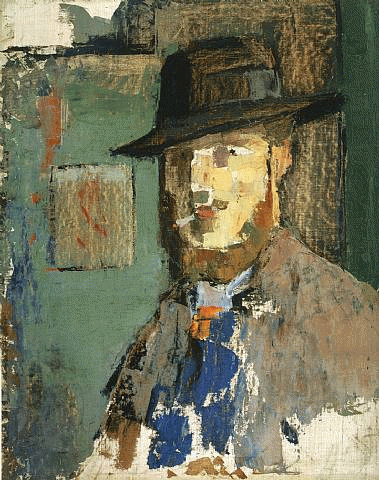With the birth of Impressionist painting in France in the late 19th century, a whole new approach to representing how the eye perceives reality was born. Also, a whole new emphasis on using intense colors in paintings.
I love colorful paintings. And if that makes my art appreciation childish or undeveloped, so be it. Howsoever, this love of mine probably accounts in large measure for: (1) my opinion that Impressionist painters and paintings heralded the beginning of “modern” art worldwide; (2) my opinion that a direct line can be traced in art history from the French Impressionists in the decade of the 1880’s to the American Abstract Expressionists seventy years later in the decade of the 1950’s; and (3) the fact that Fauvist paintings have been for years and are still my all-time favorite paintings, followed by Abstract Expressionist paintings.
In any case, a high point in colorful painting was certainly attained in France in 1905 and 1906 with the birth of Fauvism, attended by Andre Derain, Maurice de Vlamnick, and Henri Matisse. Derain painted purple trees with no leaves; de Valmnick, red trees with no leaves; and Matisse, well, I leave you to find your own favorite Fauvist works by Henri Matisse, who with Pablo Picasso is probably the most widely accepted giant of modern painting.
None of these three Fauvists’ works are found at artnet’s Artist Works Catalogues (AWC), but one long-dead Fauvist’s works are there. The painter was Belgian, not French, and his star rose and set in 38 short years; he was born in Malines, Belgium, in 1882, and he died in Amsterdam in the Netherlands, in 1916. (I have yet to determine if he fell in the Great War, and if so, on whose side he fought; but how can that matter?) I discovered his paintings at artnet just last week. I call him a painter; Wikipedia calls him a “fauvist painter and sculpter.” Some day, I may begin to appreciate sculpture.
-
-
There follows the entire “biographical entry” for Rik Wouters at artnet’s AWC: “1882: Hendrik Emiel Wouters, known as Rik Wouters, born in Malines, Belgium. 1897: Attends l'Académie des Beaux-Arts (Academie voor Schone Kunsten) de Malines in Malines, Belgium. 1900: Attends l'Académie des Beaux-Arts de Bruxelles in Brussels, Belgium. 1905: Marries Hélène (Nel) Wouters, née Duerinck. 1910: Begins to create the sculpture The Mad Virgin, inspired by the dancer Isadora Duncan. 1915: Rik and Nel Wouters settle in Amsterdam, Netherlands. 1916: Dies in Amsterdam, Netherlands.”
-
And
-
-
There follows the entire Wikipedia entry for Rik Wouters: “Rik Wouters (August 21, 1882, Mechelen—July 11, 1916, Amsterdam) was a Belgian fauvist painter and sculptor.”
-
-
It is not every day that one discovers a master in the field of art that is one’s favorite.
-
And
-
-
And
-
-
-
(All quotations and images are courtesy of the Belgian Art Research Institute and Artnet’s Artist Works Catalogues. At its AWC, artnet states: “artnet offers these catalogues free to the public as an educational resource. Simply click on an individual artist's image to begin, and check back often to browse new catalogues.”)






